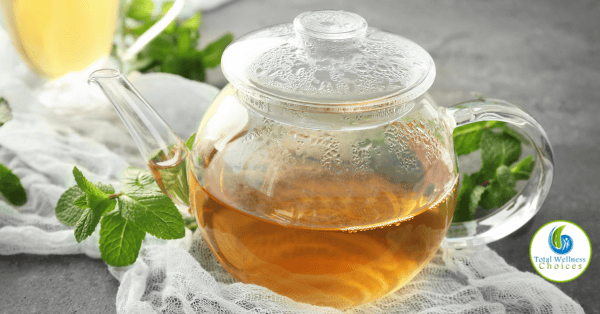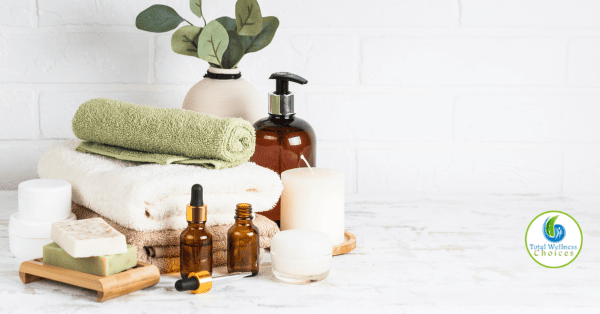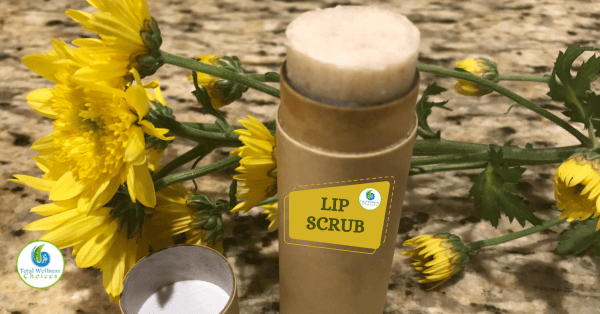Easy Homemade Deodorant for Men and Women

DIY Kaolin Clay Face Mask for Dry or Mature Skin
March 29, 2021
DIY Clove Orange Cinnamon Sugar Body Scrub
April 14, 2021Easy Homemade Deodorant Recipe for Men and Women – including DIY Essential Oil Blends!
Learn how to make an easy, effective, natural deodorant at home with this easy to follow DIY recipe. If you are trying to stay away from the aluminum based anti-perspirants then this may be the recipe for you.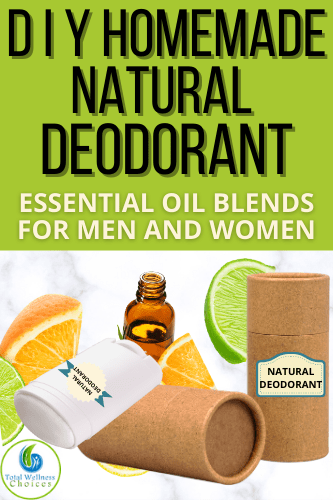
Why Use a Natural Deodorant
I use a natural based deodorant for one simple reason: The anti perspirant types contain aluminum which blocks sweat while deodorant deals with the odor.
Our bodies were made to sweat, to get rid of waste products including the stinky biproducts of waste. An anti perspirant blocks the sweat glands thus preventing these waste products from leaving your body.
Yes, you have other sweat glands in your body that waste products can be flushed from, but that brings up another point. Do you use all over body anti-perspirant? No? Ridiculous, right? Guess what?, you block odor from your underarms, but then you have odor causing sweat elsewhere.
I say, let your body do what it was intended to do – sweat is natural. You just don’t want to be stinky, so this is where a natural deodorant, especially one with bacteria fighting essential oils can help.
It takes some getting used to, but being free of the aluminum based anti perspirants can be very “freeing” for your body!
About Making a Homemade Deodorant
Making a homemade deodorant is an easy craft to learn. It’s fairly inexpensive, and you don’t need a lot of supplies or ingredients to get started.
Since it is a fairly forgiving recipe you don’t need to worry about weighing exact amounts like in some recipes.
You can even make adjustments in the formula of this deodorant if you like. You might change the dry ingredients. Instead of using cornstarch you can use arrowroot instead. The baking soda can be exchanged for light kaolin, or another type of powdered clay.
If you like just one essential oil, or have a blend of your own, you can use that instead of my suggested blends. Want the deodorant unscented? Don’t add any essential oil to it!
There are different sizes of deodorant containers available for homemade deodorant, so you can chose the size or type you prefer. The smaller sizes are great when travelling and the larger sizes might be perfect at home.
Related:
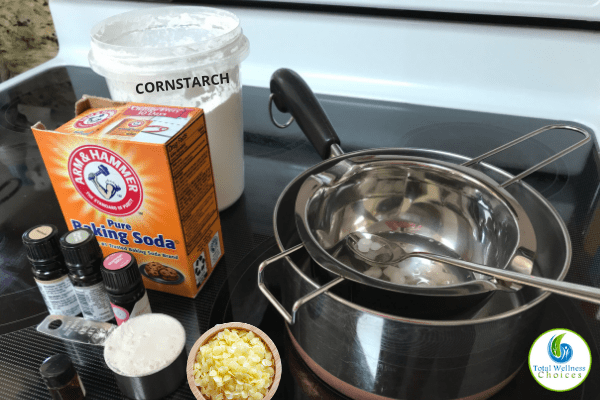
Homemade Deodorant Supplies
Homemade Deodorant Base
The base of this homemade deodorant include just four easy to obtain ingredients.
Beeswax
Beeswax was chosen not only to add stability to the product, but because it contains emulsifiers that are all-natural, which in turn help retain moisture in the skin. It is a natural wax produced by honey bees of the genus Apis.
I chose a beeswax that comes in small pellet type form as it is easier to measure correctly. You can always grate or cut the beeswax into very small pieces.
Solid Coconut Oil
Coconut oil works well in skin care treatments because of its conditioning properties. It is a natural moisturizing agent that penetrates and hydrates deeply. An edible oil, coconut oil is extracted from the kernel or meat of mature coconuts harvested from the coconut palm.
I recommend an organic, unrefined, cold pressed form of coconut oil as it is additive free and thus I feel healthier for my body.
Baking Soda
Baking soda is used for its effectiveness at absorbing moisture, including sweat. Thus it can be useful for keeping your underarms dry. It also effectively kills odor causing bacteria.
Some people are sensitive to baking soda when used on the skin so it is important to do a skin patch test before using!
You can do a patch test by taking a small amount of baking soda mixed with water and applying it to a small area of your skin, like the inside of your upper arm. Wait up to 48 hours to see if your skin develops any sort of rash, any reaction or irritation.
What to do if you are sensitive to baking soda? Use light kaolin clay in its place! The PH of light kaolin clay (around 5 PH) is lower than that of baking soda (around 9 PH), thus there is less chance of skin sensitivity!
Cornstarch
Cornstarch also helps to absorb odors and fight wetness. Just make sure to use a non GMO brand. If you have allergies to cornstarch, or just don’t care to use it in your homemade products, arrowroot powder is a great substitute!
Essential Oil Blends for Homemade Deodorant
Keep in mind that not all essential oils work well with everyone. If you have an allergy to an essential oil, or the plant that it is distilled, or extracted from do not use that essential oil. You can leave it out, or chose another essential oil, such as lavender, that works well for you.
Always, do a skin patch test prior to topically using an essential oil you have never used before! See my sections on essential oil safety:
- 8 Essential Oil Dangers and Risks
- How to Dilute Essential Oils for Topical Use
- Essential Oils that are Safe for Kids
- Essential Oils to Use During Pregnancy
Essential Oil Blends for Men
- If you chose to use an essential oil blend in your deodorant recipe, you may not know what essential oils to use for men. I am surrounded by men who very willingly agreed to try out some of my blends.
- The men that tried my essential oil blends especially liked the tea tree mixed blends. The guys and myself included liked the citrus blend called Nana’s Deodorant Blend for Women. Just because it says women (or men) doesn’t mean you can’t use it for anyone!
BJ’s Deodorant Blend for Men
- 7 drops distilled lemon
- 7 drops green mandarin
- 3 drops tea tree
- 1 drop chamomile (roman)
JR’s Deodorant Blend for Men
- 5 drops patchouli
- 5 drops grapefruit (pink)
- 5 drops tea tree
RB’s Deodorant Blend for Men
- 4 drops grapefruit (pink)
- 3 drops distilled lemon
- 3 drops cedarwood (Virginian)
- 2 drops tea tree essential oil
- 2 drops patchouli
- 1 drops black pepper
Essential Oil Blends for Women
Most women, myself included, like the softer floral essential oil scents in a deodorant. Lavender is one that is at the top of the list for a lot of women. Not far behind are rose, geranium (especially the softer rose scented variety), chamomile and ylang ylang floral scents, just to name a few.
- A second runner up for the women I talked with were the citrus scents. Sweet orange, mandarin, tangerine, and pink grapefruit citrus essential oils were at the top of the list. Not far behind were lemon and lime essential oils which some referred to as clean, refreshing scents. Like I said before citrus essential oils were well liked by the menfolk also!
JJ’s Deodorant Blend for Women
- 8 drops lavender
- 5 drops geranium (bourbon)
- 2 drops chamomile (roman)
AJ’s Deodorant Blend for Women
- 6 drops lavender
- 4 drops geranium (bourbon)
- 3 drops frankincense (serrata)
- 2 drop ylang ylang complete
Nana’s Deodorant Blend for Women
- 6 drops green mandarin
- 6 drops grapefruit (pink)
- 3 drops distilled lime
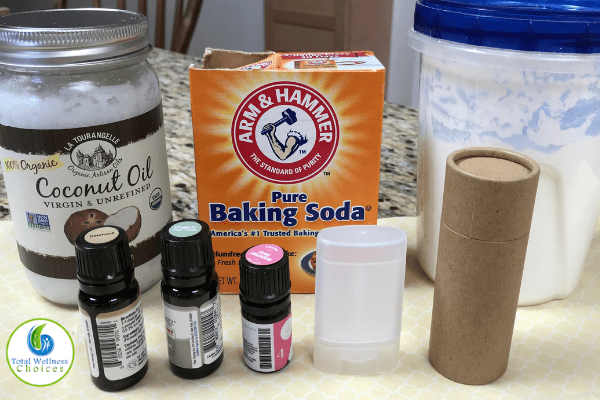
Ingredients/What You Need for this DIY Natural Deodorant
- 8 teaspoons coconut oil
- 1 1/2 teaspoons beeswax pellets
- 2 Tablespoons baking soda
- 2 Tablespoons cornstarch
- 15 drops essential oils (an essential oil blend above, or your own blend). You do not have to add any essential oil if you do not want!
- Deodorant containers (can be cardboard deodorant containers – Push-up style or 15 ml (1/2 oz) plastic mini deodorant containers.)
* This recipe will make approximately 3.6 ounces total. I made one 2.5 oz size and two 15 ml (1/2 oz) travel size deodorants.
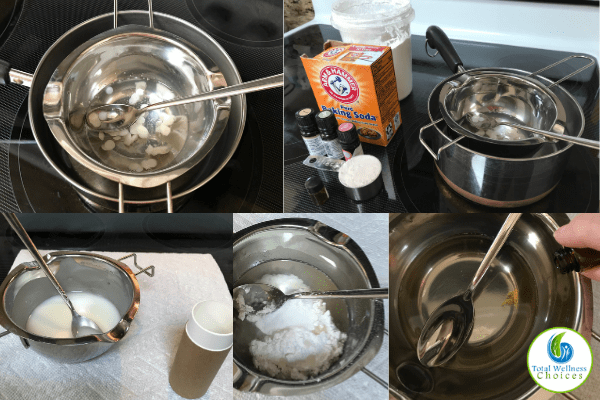
Directions
- Melt beeswax in double boiler over low heat. I like using a stainless steel double boiler pot, which I place overtop of a medium sized pot that I have filled half way with water. Once the water is warm I add the beeswax and let it get almost totally melted. (If you prefer you can melt in a glass bowl in the microwave until almost melted. (15 second increments recommended in the microwave)
- Add the solid coconut oil to the almost melted beeswax and continue melting over low heat (15 second increments in microwave). Heat until completely melted, stirring occasionally.
- Remove from heat source and add essential oils (if using) and stir well.
- Stir in baking soda (or light kaolin clay powder) and cornstarch (or arrowroot powder). Stir until powder well incorporated into liquid. (Reheat for a few seconds if needed).
- Slowly pour the mixtures into your containers, careful not to splash the hot liquid on yourself. (When pouring into the smaller travel sized containers, I like to use a small funnel for this process or a medicine dropper that I can throw away).
- Let your deodorant cool and completely solidify.
Once it has cooled and solidified, your homemade deodorant is ready to use! Use as you would for any natural deodorant. If you made a travel size deodorant container you can take it with you when you need to refresh!
I hope you found this easy homemade deodorant recipe for men and women helpful. Leave your feedback below.
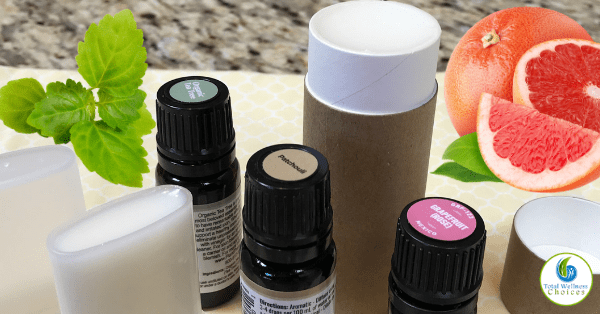
These statements have not been evaluated by the Food and Drug Administration. This article is for educational and informational purposes only and does not intend to diagnose, treat, cure, or prevent any disease or health condition. It is always recommended that you seek the advise of your private medical doctor.







